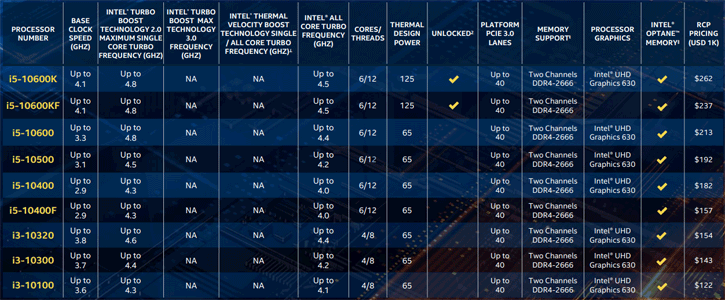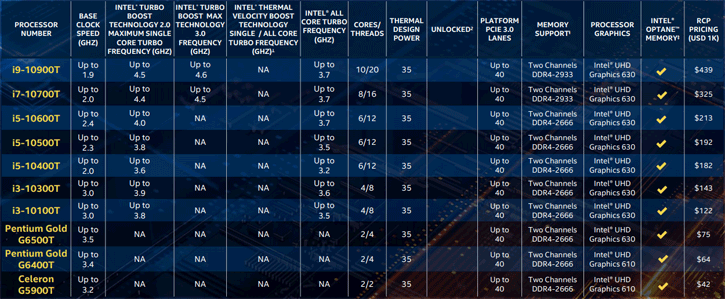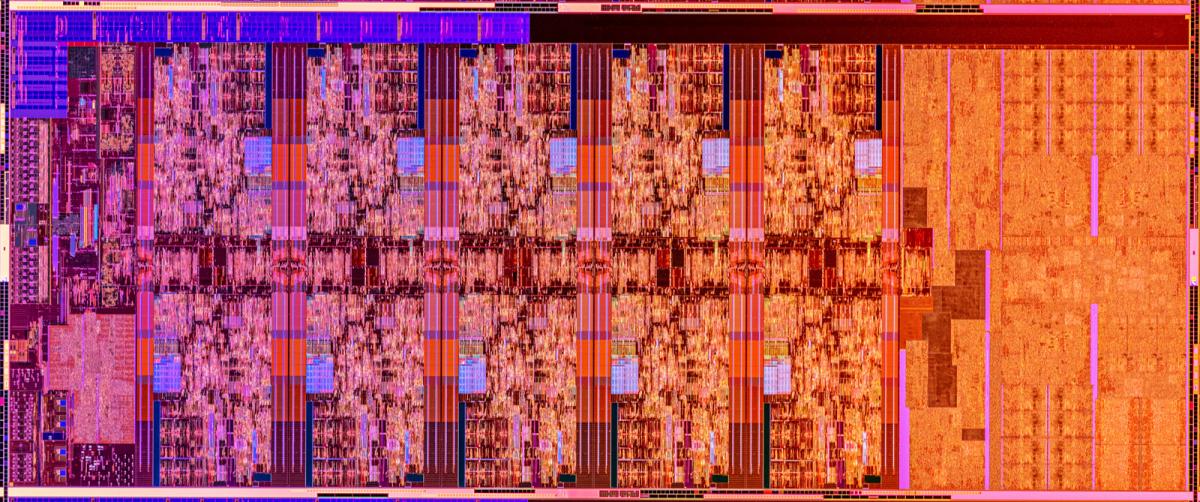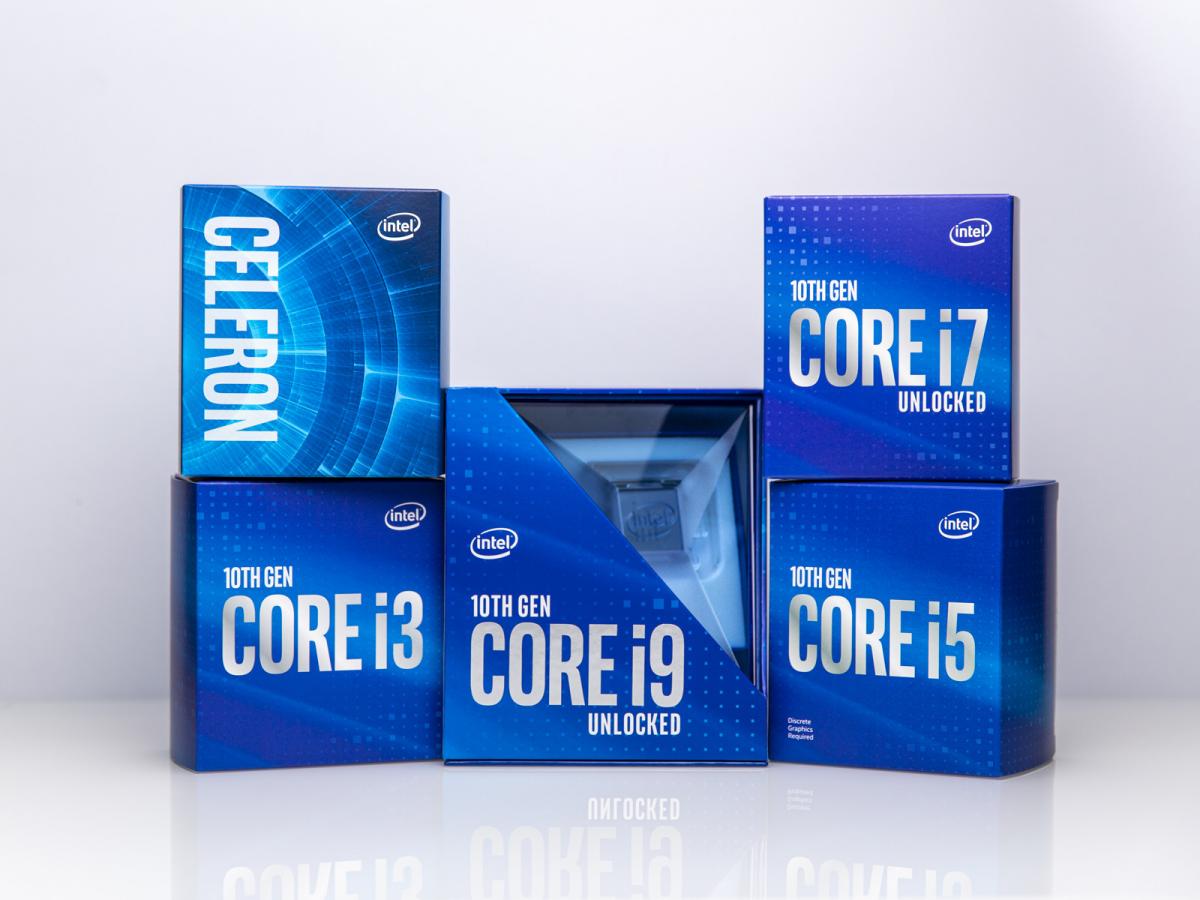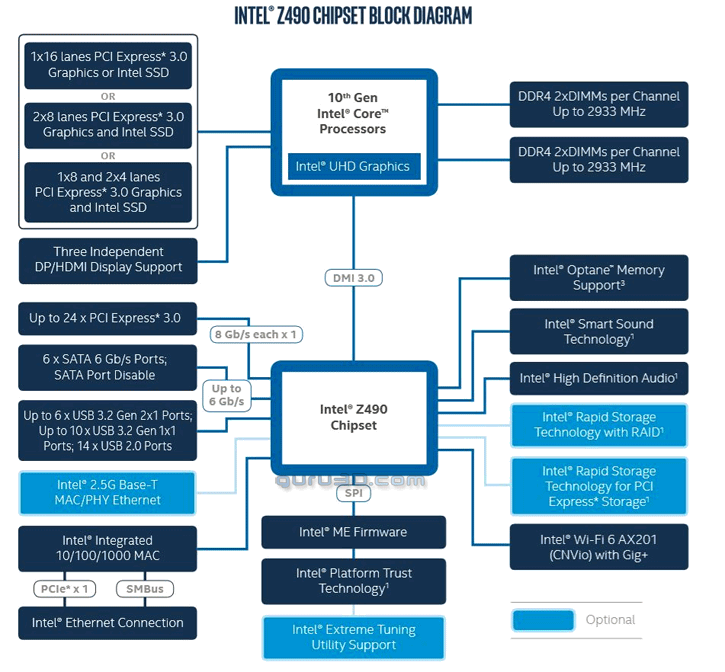A processor series that has been discussed here many times over the past few months is Intel's Comet Lake-S series for desktop. Today Intel is announcing the new product line, armed with Socket LGA1200 and Z490 motherboards the desktop range is wide, with the Core i9-10900K marketed as the fastest gaming processors your money can get you.
Before we begin this writeup, today is the announcement. That means the availability and actual reviews on these products are to follow later in May. So today an overview of what you can expect to get released in the weeks to follow.
It is April 30 of the year 2020, Intel announces its tenth generation Core processors codenamed “Comet Lake-S”. Among the main features we have HyperThreading through the entire line, from Core i3 to Core i9, up to 10 cores and 20 threads, and up to 5.3GHz for a single-core boost. These processors require a new motherboard, the 400 Series motherboards with an LGA 1200 socket. in a nutshell, Comet Lake-S processors are the 10th generation Core processors from Intel. Much like Generation 9 (Coffee lake-S), Comet Lake-S and the following next-gen Rocket Lake-S are based on Intel's 14nm process and you could safely say are based on the underlying microarchitecture that is Skylake, but refined and advanced. Comet Lake-S, however, makes a step towards 10-core processors with Intel's Core i9-10900 series that has 10 cores and 20 threads.
That means the flagship desktop processor is the Core i9-10900K with ten cores + twenty threads hyperthreading (SMT), where a single core can go up to 5.3 GHz. For all cores clocks it looks to be 4.9 GHz, which is unconfirmed at this time though. A Core i7-10700K with eight cores and sixteen threads would lock in at of 5.1 GHz on a single core. There is also an unlocked Core i5 from the party and the 10600K. The six cores and twelve threads will run a maximum of 4.8 GHz. You will notice the processors the flagship processor to have a Turbo Boost frequency listing a 5.3GHz thanks to what is called Intel Thermal Velocity Boost technology. Basically, if the processor is kept cool enough, it can run a turbo bin at that frequency.
Updated Turbo Boost Max 3.0 technology
Two similar chips are never the same; this is true even if both dies came from the very same wafer. Likewise, when stretching a processor to its limits, even the individual cores on a single monolithic integrated circuit produce slightly different performance characteristics. Testing individual cores by disabling all the other cores will reveal which ones happen to have better thermal and voltage properties and are stable at higher frequencies. They will each slightly differ. Intel attempts to exploit those "superior cores" with Turbo Boost Max Technology. During the manufacturing process, Intel is able to test each die and determine which cores possess the best overclocking capabilities. That information is then stored in the CPU in order from best to worst. Updated Turbo Boost Max 3.0 is now responsible for identifying the best cores in the processor, prioritizing them for applications.
10th Gen Intel Core Desktop Specifications and Prices
It is a bit much to list the pricing of all the models, but we'll cherry-pick some SKUs, the rest you can read from the slides. The Core i9-10900KF will cost $ 472,-, the i7-10700KF will cost $349,- and the i5-10600KF will cost $232,- We highlight the KF series these as they are the ones that have unlocked multiplier and do not have integrated graphics, similar to the conditions of what AMD offers with Ryzen. The Core i3-10300 goes for $143,- the i3-10100 for $122, these two will be competing with the Ryzen 3 3100 at $99 and Ryzen 3 3300X at $120. Below we created an overview of what is released specifically in the Core range, as there are also Pentiums and Celerons released. Models with a K in the suffix are unlocked, and with an F as a suffix means it has no (active) integrated GPU. For a detailed spec and price list you can download the PDF, located at the end of this news-item.
| CPU | Cores / Threads | Base Clock | Single Core Turbo | Max Turbo 3.0 | All Core Turbo | Thermal Velocity Boost | TDP |
|---|---|---|---|---|---|---|---|
| i9-10900K | 10C / 20T | 3.7 GHz | 5.1 GHz | 5.2 GHz | 4.8 GHz | 5.3 / 4.9 GHz | 125W |
| i9-10900KF | 10C / 20T | 3.7 GHz | 5.1 GHz | 5.2 GHz | 4.8 GHz | 5.3 / 4.9 GHz | 125W |
| i9-10900 | 10C / 20T | 2.8 GHz | 5.0 GHz | 5.1 GHz | 4.5 GHz | 5.2 / 4.6 GHz | 65W |
| i9-10900F | 10C / 20T | 2.8 GHz | 5.0 GHz | 5.1 GHz | 4.5 GHz | 5.2 / 4.6 GHz | 65W |
| i7-10700K | 8C / 16T | 3.8 GHz | 5.0 GHz | 5.1 GHz | 4.7 GHz | TBA | 125W |
| i7-10700KF | 8C / 16T | 3.8 GHz | 5.0 GHz | 5.1 GHz | 4.7 GHz | TBA | 125W |
| i7-10700 | 8C / 16T | 2.9 GHz | 4.7 GHz | 4.8 GHz | 4.6 GHz | TBA | 65W |
| i7-10700F | 8C / 16T | 2.9 GHz | 4.7 GHz | 4.8 GHz | 4.6 GHz | TBA | 65W |
| i5-10600K | 6C / 12T | 4.1 GHz | 4.8 GHz | TBA | 4.5 GHz | TBA | 125W |
| i5-10600KF | 6C / 12T | 4.1 GHz | 4.8 GHz | TBA | 4.5 GHz | TBA | 125W |
| i5-10600 | 6C / 12T | 3.3 GHz | 4.8 GHz | TBA | 4.4 GHz | TBA | 65W |
| i5-10500 | 6C / 12T | 3.1 GHz | 4.5 GHz | TBA | 4.2 GHz | TBA | 65W |
| i5-10400 | 6C / 12T | 2.9 GHz | 4.3 GHz | TBA | 4.0 GHz | TBA | 65W |
| i5-10400F | 6C / 12T | 2.9 GHz | 4.3 GHz | TBA | 4.0 GHz | TBA | 65W |
| i3-10320 | 4C / 8T | 3.8 GHz | 4.6 GHz | TBA | 4.4 GHz | TBA | 65W |
| i3-10300 | 4C / 8T | 3.7 GHz | 4.4 GHz | TBA | 4.2 GHz | TBA | 65W |
| i3-10100 | 4C / 8T | 3.6 GHz | 4.3 GHz | TBA | 4.1 GHz | TBA | 65W |
TDP of 125 Watts (and beyond)
Comet Lake processors are allowed to run load values considerably higher and longer than 9th gen Coffee Lake. The TDP that is specified/listed is now 125 Watt. However, the story does not end there though as that is the P1 state. For a 9900K that value sits at 95W, with the Comet Lake S thus 125W, of course, it is two more cores so nobody will wonder about that. However, there is also a PL2 state where a higher power limit that can be applied for a relatively short time. Let's take the 9900K again, it had a PL2 allowance of 1.25 times PL1, = 119W, for a duration of 28 seconds. If I take the 10900K as an example, PL2 now is 2 times PL1, so 250W. That PL2 state now also is longer, 56 seconds. And therein reaps the benefit of additional performance, substantially.
| CPU | P1 State | PL2 State | Duration |
|---|---|---|---|
| Core i9 10900K | 125 Watt | 250 Watt | 56 seconds |
| Core i7 10700K | 125 Watt | 229 Watt | 56 seconds |
| Core i5 10500K | 125 Watt | 182 Watt | 56 seconds |
| Core i9 9900K | 95 Watt | 118 Watt | 28 seconds |
| Core i9-9900KS | 127 Watt | 159 Watt | 28 seconds |
in short, this means the overall performance of Comet Lake could be a lot higher compared to Coffee lake and older processors, but that also will have an effect on power consumption and inevitably, heat levels. That new and close to a minute PL2 state duration, however, is significant.
The Series T
Where "F" means the chip has no built-in graphics processor the "T" means the chips is designed to use less power while also having less performance than the standard chips without any letters. A "U" means the chip is designed for laptops and mobile devices, as "U" chips are Intel's "ultra-low-power" models. For the 10th gen Core series Intel will also be releasing a T series, these have a low TDP in the 35 Watt range.
New overclocking related features
As in all generations, Intel brings new developments for overclocking in this new tenth generation. The ones highlighted by the company are Hyper-Threading per core, overclock of the PEG and DMI buses, and better control of the voltage-frequency curve. They will also renew their XTU utility with more functions and a better graphical interface.
Another improvement is a thinner die, improving the thermal transfer from the cores to the IHS, which should help to reach better temperatures or at least get heat faster away from the processor.
Z490 and what about PCI Express 4.0?
While the new Z490 motherboards mechanically can handle PCI Express 4.0, the reality is that Comet lake-S is a PCI Express 3.0 compatible product series. Z490 however will also support the following series, Rocket Lake-S, and that processor will move towards What about PCI Express 4.0 The following is unconfirmed but, Comet Lake-S actually was designed to support PCI Express 4.0. However an issue prevents PCIe 4.0 to become usable, so the platform will support PCI-E 3.0 instead. The reason behind this is the presence of Jitter in the Z490 chipset signal, that causes instability in the data signal and that means that specifications required for the PCI-Express 4.0 certification are simply not met. PCI-E 4.0 is working at very high frequencies, and that requires that the signal be completely clean. This information remains speculation and hearsay though. That also means Comet Lake is using an x4 DMI PCIe Gen 3 interlink (the link between the processor and chipset).
Intel informed us specifications of the three consumer chipsets: Z490, H470 and B460. A cheaper H410 chipset will follow at a later date. The Z490 chipset largely resembles its predecessor in terms of its feature set.
| Z490 | H470 | B460 | Z390 | |
|---|---|---|---|---|
| OC / Tweaking | Yes | - | - | Yes |
| PCIe 3.0 lanes CPU | 16 | 16 | 16 | 16 |
| PCIe 3.0 lanes chipset | 24 | 20 | 16 | 24 |
| SLI / Crossfire | Yes | - | - | Yes |
| SATA3 | 6 | 6 | 6 | 6 |
| USB 3.1 | 6 | 4 | 0 | 6 |
| USB 3.0 | 10 | 8 | 8 | 10 |
| USB 2.0 | 14 | 14 | 12 | 14 |
| AX WiFi 6 | Yes, by CNVi | Yes, by CNVi | No, controller required |
- |
| 2.5 Gigabit LAN | Yes, by PHY | Yes, by PHY | Yes, by PHY | - |
In a few weeks (May 2020) the full spec, feature, and performance reviews will go live, including here at Guru3D.com. If you like to read it more relaxed. You can download the entire media-deck with the presentation and specification right here.




